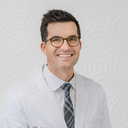Has anyone had experience using the new Thread lift product, Silhouette Lift? If so, how does it differ from Contour Lift. Looking for an alternative to a full blown Facelift.
Answers (17)
From board-certified doctors and trusted medical professionals
Dr. Gregory S. Keller, MD, FACS

Dr. Gregory S. Keller, MD, FACS
Board Certified Facial Plastic Surgeon
Answer
Dr. Jeffrey S. Rosenthal, MD

Dr. Jeffrey S. Rosenthal, MD
Board Certified Plastic Surgeon
Answer
Dr. Cameron Chesnut, MD, FAAD, FACMS

Dr. Cameron Chesnut, MD, FAAD, FACMS
Dermatologic Surgeon, Board Certified in Dermatology
Answer
Dr. Young R. Cho, MD, PhD

Dr. Young R. Cho, MD, PhD
Board Certified Plastic Surgeon
Answer
Dr. Andrew T. Lyos, MD, FACS

Dr. Andrew T. Lyos, MD, FACS
Board Certified Plastic Surgeon
Answer
Dr. David Hansen, MD

Dr. David Hansen, MD
Dermatologic Surgeon, Board Certified in Dermatology
Answer
Dr. Kaete A. Archer, MD
Dr. Kaete A. Archer, MD
Facial Plastic Surgeon, Board Certified in Otolaryngology – Head and Neck Surgery
Answer
Dr. Elysa Fisher, MD
Dr. Elysa Fisher, MD
Board Certified Plastic Surgeon
Answer
Dr. Robert F. Jackson, MD
Dr. Robert F. Jackson, MD
Board Certified General Surgeon
Answer
More Silhouette InstaLift Questions
See all Silhouette InstaLift Q&AWE SEND PRETTY
EMAILS
What’s trending? Who’s turning heads? Which TikTok myths need busting? We’ve got you. No fluff, no gatekeeping—just real talk. Get our free, unfiltered newsletter.
